Home to Fil-Am artists, Bindlestiff Studio turns 30
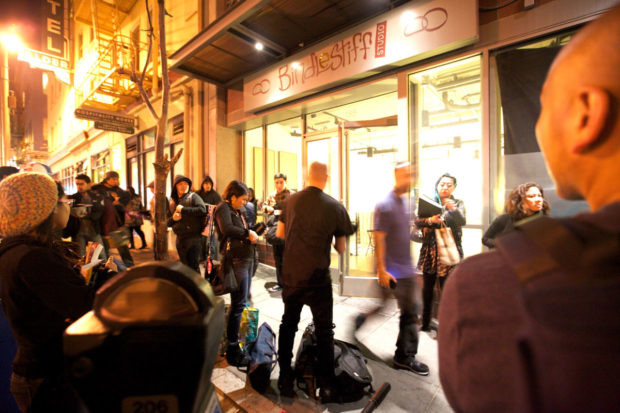
The new Bindlestiff Studio. CONTRIBUTED
SAN FRANCISCO – “The Epicenter for Filipino American Performing Arts,” Bindlestiff Studio marks 30 years of “underground, unapologetic, performing arts” with a sold out gala and fundraiser, Welcome Home, on Saturday, December 7, 2019 at SOMArts Cultural Center.
Click Here for the Amazon Deal of The Day
The event, hosted by former Bindlestiff Studio development director, award-winning queer performer, writer, and theater artist, Kat Evasco, features past and present Bindlestiff artists including performances by renowned comic, Kevin Camia, a member since1997, who recently made his network television debut on The Late Show with Stephen Colbert, and local Filipino American indie-rock legends, Julie Plug.
Bindlestiff Studio has been through different eras, upheavals, and transitions with triumphs in between. “You can’t be this old without going through rough patches and challenges. We survived because of community support that continues to sustain us,” says managing director, Oliver Saria.
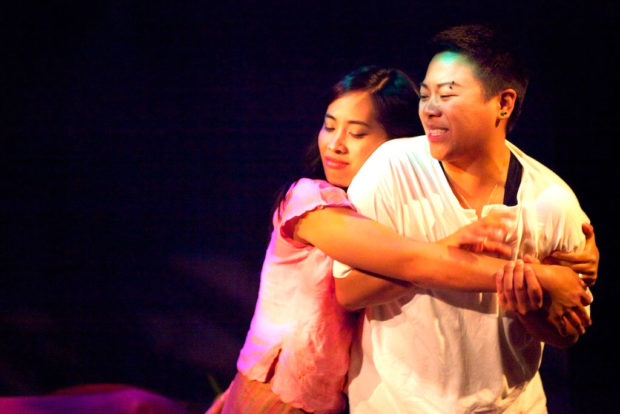
Aureen Almario as Hermia and Tonilyn Sideco as Lysander in “A Pinoy Midsummer” adapted from Shakespeare and directed by Lorna Velasco. CONTRIBUTED
Thirty years of “bold artistic expression and community engagements” in the longest continually running black box theater in what is now SOMA Pilipinas, Filipino Cultural Heritage District, all started as a dream.
Click Here for the Amazon Deal of The Day
“I came from Canada with a dream to go to San Francisco and start a theater,” says interdisciplinary theater, film, visual artist, and educator, Chrystene Ells, who co-founded Bindlestiff Studio with then boyfriend, Chris Brophy, and Stephen Pocock in 1989.
Ells was driving down Howard Street and saw a hand-painted sign for a space for lease in an old residential hotel on 185 6th Street. The space was ankle deep in water and full of dirt and garbage. In spite of this, she saw its potential beyond the filth. “I recognized that was the space I had been seeing in my dreams that I came from Canada for,” says Ells.
Ells and Brophy lived and did theater in the space from 1989 to 1994. Their first show was The Ballad of Reg and Rosie, about a couple of drifters who fall in love and jump trains during the depression. “During our research for the show, we came across this word ‘bindlestiff.’ Stephen went down to the library and came across this logo, the hobo symbols. He said, ‘this should be our logo. It means never give up,’” says Ells.
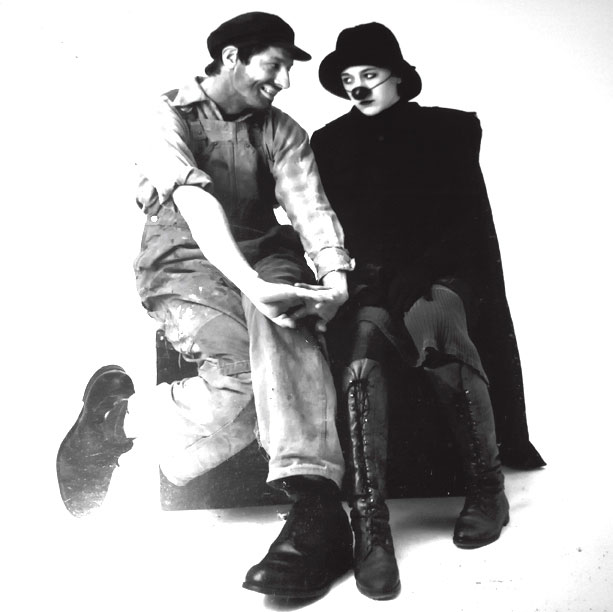
Founders Chris Brophy and Chrystene Ells in Sven and Hedvig at Bindlestiff Studio (1993). CONTRIBUTED
In 1994, after years of struggling to keep the theater running, Ells decided to turn over the space to a group who wanted to turn it into a rental theater space. “Chris and I decided we couldn’t live like that anymore. The theater was the heart of our relationship because when we moved out, we split up and went our separate ways,” says Ells.
Ells’ other dream was to create an experimental Grotowskian theater lab with teenagers. Working with the Mission Cultural Center after leaving Bindlestiff, an opportunity came through the Private Industry Council for an afterschool program for at risk youth.
Click Here for the Amazon Deal of The Day
Ells thought, “what if kids came in, warmed up, learned how to walk on stilts, make masks, then write a theater show and presented it? And one of the very first people that came out to audition was this little Filipino girl named Lorna Aquino Chui.”
Theater artist, founding member and former artistic director, Lorna Chui Velasco, is the first Filipino to be deeply involved with Bindlestiff. She grew up on Russ and Natoma streets half a block from Bindlestiff.
“Chrystene Ells made a pitch to our English class at Mission High School about an afterschool program. My ears perked up. It’s a paid job and all we had to do was theater, and it’s so close to my home. I’m like, ‘Yeah! Game! I’m there!” says Velasco.
Velasco and a cohort of other SoMa kids joined the afterschool theater program formed by Ells called the Riot Act Theater Company (R.A.T.C.O.) that presented works at various venues for two years. “We went through the theater training and experience as high school students not knowing that the quality of the work is college level,” says Velasco.
Meanwhile, Bindlestiff, under new management, was struggling to make it as a rental house. Ells was handed back the keys to the theater. It was a turning point for her. “Do I go back or do I go forward with my life?” says Ells. “But I had this sense that I really need to do something to save the theater.”
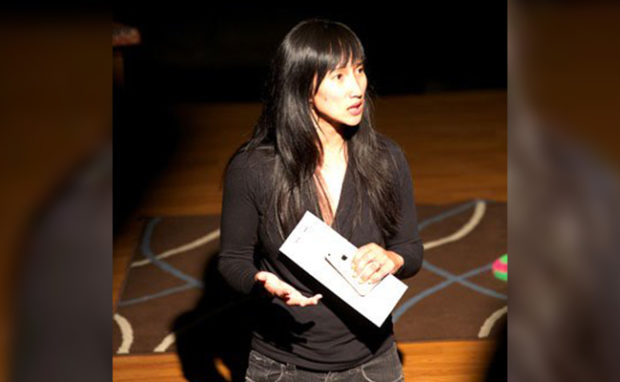
Director Lorna Velasco at the closing night of “There’s the Moon and Then There’s You” (2015) written by Christina Ying. CONTRIBUTED
Ells along with other theater companies created the Theater Bay Area coalition where they all paid a portion of the rent of Bindlestiff and supported each other in creating work. It did not work out as planned. “What happened was, every time they did a show, they left, and so, it was just a skeleton crew. I was just crying. ‘What am I doing? I have no energy for this. I don’t want to do this anymore.’ But there was this passion and love in my heart for the theater,” says Ells.
Click Here for the Amazon Deal of The Day
“Then Lorna said, ‘you know, I have a show that I wanna do.’ She was 19. ‘I wanna do a one woman show.’ I said, ‘awesome! Let’s build it. Let’s work on it. What’s the name of the show? ‘It’s called Babae.’’’
Premiering at the San Francisco Working Women’s Festival then remounted at Bindlestiff in 1997, Babae was the first ever Filipino-centric production done at the space. “Being a Fil-am and just having somebody name their show Babae…” recalls director, actor, stand-up comic, founding member and former artistic and managing director Allan Manalo who came to see the show with his wife, producer Joyce Juan Manalo.
“She used masks, stilts, shadow play which ended up being signature art forms, part of the Bindlestiff DNA and tradition.
The theater was packed over capacity. “Where are all these Filipinos coming from? The capacity of that place was 49 seats and there were like a hundred people in there every night to see Babae, and they were going nuts, they loved it! I remember looking around going, ‘this theater has not been like this.’ After I’ve been slogging for years trying to save the place and I was on the verge of just giving up,” says Ells.
Manalo came up to Ells and told her about his Filipino satirical sketch comedy troupe Tongue in Mood, a play on a swear phrase in Tagalog, that he initially formed in 1992 with Kennedy Kabasares, Ron Muriera, and Rex Navarette and re-established in 1996 with Patty Cachapero and Kevin Camia.
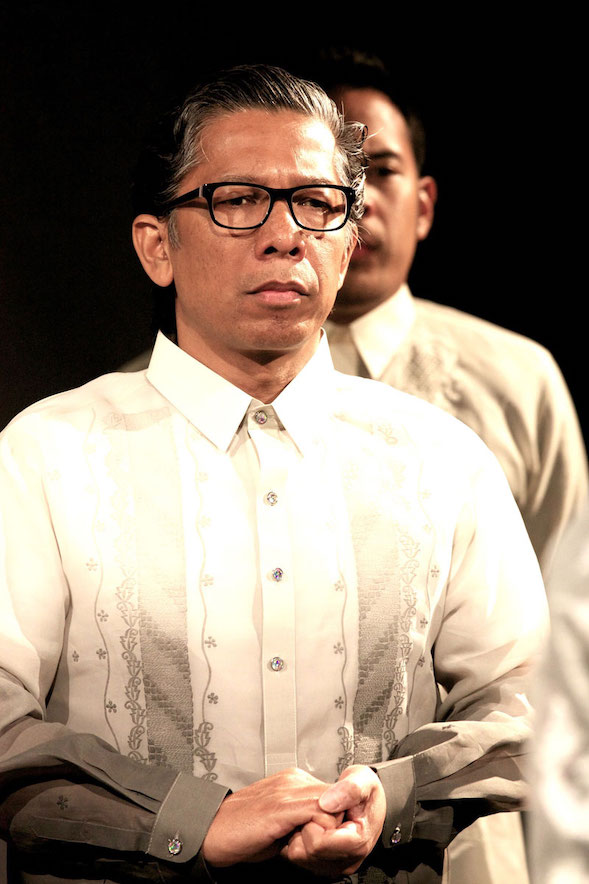
Allan Manalo in “A Pinoy Midsummer” (2013). CONTRIBUTED
“‘We got this show Tsismis (gossip). I think the Filipino crowd would really appreciate it and we’d like to mount it,’ And I’m like, ‘when? Can we start now?’ says Ells. “It was just absolutely up to the rafters with laughing, happy, excited people. It was like something was electric about it. And I was like, ‘this is it!’”
Click Here for the Amazon Deal of The Day
At the wrap party for Tsismis, Ells made Manalo an offer. “I said, ‘Hey Allan, do you want a theater?’ And he’s like, ‘What do you mean?’ I was like, ‘Man, I think the writing’s on the wall. Bindlestiff is your theater. It was clear that the theater was riding on a big new wave and everything they did was so successful, so amazing, and I just watched the community just blossom,” says Ells. “I don’t feel super affiliated with the theater now. I dropped a pebble in a pond 30 years ago and now it’s this.”
Allan and Joyce Manalo along with their companies, Tongue in a Mood and Teatro ng Tanan (TNT) ushered the Filipino American Era of Bindlestiff in 1997, becoming the only permanent, community-based performing arts venue in the nation dedicated to showcasing emerging Filipino American and Pilipino artists.
The Manalos ran Bindlestiff Studio before it was a non-profit organization until they left to live in the Manila in 2002, but not after creating an organizational structure for it. “I thought it was important to keep the doors open and to keep it Filipino American,” says Manalo. “I remember being in the tech booth of the old space. I looked and there was all these brown faces, all these Filipinos that were really just paying attention. And I was like, ‘Wow! This is really our place! This is our space!’”
In 2001, Lorna Velasco and Mark Marking became co-artistic directors and the position of managing director went to Olivia Malabuyo Tablante, a founding member who was then also part of TNT.
It was during this time that Bindlestiff faced its biggest challenge that shook the core of the organization. The San Francisco Redevelopment Agency (SFRA) acquired the building that housed Bindlestiff Studio with plans to turn it into a low-cost housing project with no commitment to retain the theater space. A community fight with the SFRA ensued.
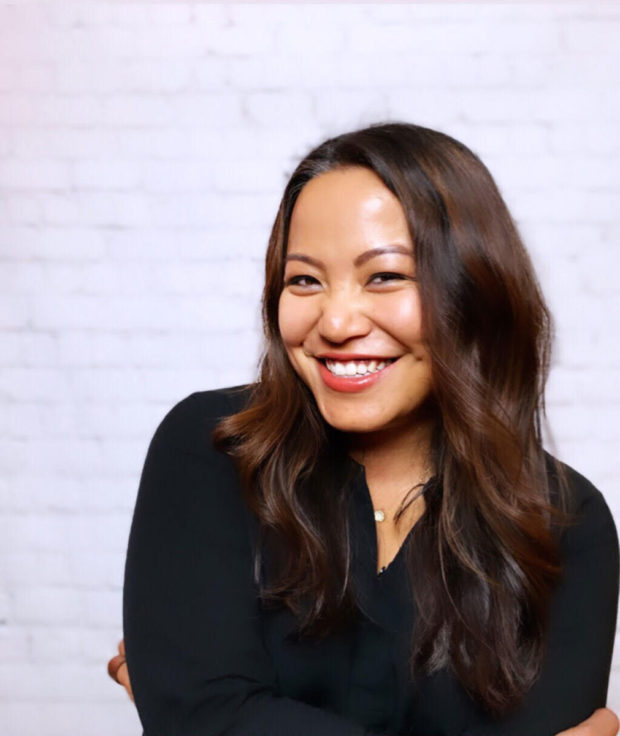
Kat Evasco. CONTRIBUTED
“[We] we’re not gonna let the redevelopment agency kick us out. That’s how we received it at the time,” says Malabuyo Tablante. “What was really happening was a highly political environment that we didn’t understand. We didn’t realize we were caught in the crossfire.”
Click Here for the Amazon Deal of The Day
After 16 endless weeks of talking to commissioners at city hall and the public outcry for the theater’s preservation, SFRA committed to building the shell of a new 99-seat, black box theater for Bindlestiff in the basement of the newly rebuilt housing complex.
Malabuyo Tablante became the project manager for the build out of the new space and, along with Bindlestiff Studio founding board member Rene Acosta attended weekly construction and design meetings on top of running a million dollar capital campaign for the new space.
“I was young and inexperienced. None of us knew what we were doing. I figured out what to do with every step. In the process of fighting for this, I’m seriously burning out, and all my longtime theater friends, we all started fighting. It was really bad.”
Malabuyo Tablante was instrumental in turning Bindlestiff into a non-profit organization, filing for the 501(c)(3) status herself. It just so happened that her pivotal role was far away from the spotlight. It was unglamorous.
“For a long time, it was just too painful. I had done so many things and all that mattered was, ‘Oh, Liv went crazy,’ not realizing what I was doing—making sure that we were doing the fundraising, that we were paying our final electricity bill at the old space, getting us non-profit status, and all of the minimum requirements to do build up. I didn’t go crazy; I burned out.
“Nobody intentionally did anything. We were all doing, in our youthful energetic minds and our passion, what we thought was the best. There was no one in the wrong.”
And it was all worth it. “On a personal level, I would do it all over again. Look at what I went through on the 30 years to follow. It’s always what I imagined, without any pain, no gain, right? That there would be some era that would pass and I would be able to look back and go to a space, pay my ticket, and experience quality Filipino American art in my native San Francisco.”
While the turmoil went on, Bindlestiff Studios moved to 505 Natoma Street as a temporary transitional space between the old and the soon to be built new space. This era gave birth to what is known as the “Natoma generation,” a batch of new blood Filipino American artists who started becoming involved with Bindlestiff in various capacities towards the closing of the old space.
Many were students of Dan Begonia and Allyson Tintiangco-Cubales, Asian American Studies professors at SF State University, who made their students attend shows at Bindlestiff for extra credit.
Click Here for the Amazon Deal of The Day
The “Natoma generation” produced theater artists who are now leaders and movers in the community including actor and director, Joe Cascasan; Bindlestiff Studio artistic director, Aureen Almario; and Kat Evasco. “What Bindlestiff has done well over the years is being able to create a pipeline of students coming through from college. There was an influx of us that came in; the ‘Natoma generation,’” says Evasco.
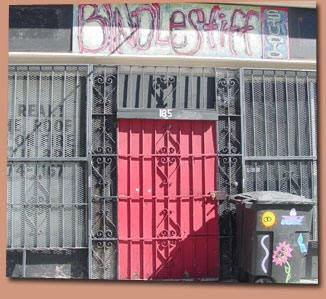
The old Bindlestiff Studio. CONTRIBUTED
“I wish I could have that feeling again of seeing Filipinos on stage for the first time,” says Almario. “It was just so exciting. I’ve never in my life felt so seen and so validated. As an audience member, I loved it so much hearing those stories.”
Out of the Natoma space were born productions that have become Bindlestiff’s staple cornerstone shows: The Love Edition, The Bakla Show, and The Fob Show as well as the continuation of another staple, Stories High.
Another big bump on the road for Bindlestiff was losing its lease at the Natoma space in the summer of 2007. The completion of the new space was delayed and they were displaced. “When you have a space you can do more shows. What’s hard for artists of color is we don’t have enough spaces. The physical space is one of the biggest assets of the organization. Especially as a volunteer run organization,” says Evasco.
Bindlestiff took up an office space at the Mint Mall and continued producing shows in various venues in the city. “Even though Bindlestiff didn’t have the space during the transition, the community of artists was always there,” says Cascasan.
The new Bindlestiff Studio finally opened in September 2011 and continues to offer theatrical productions; music and film festivals; workshops in directing, production, acting, stand-up comedy, and writing; as well as arts education programs for youth and seniors.
Click Here for the Amazon Deal of The Day
“I hope we keep inspiring younger Filipino artists who want to participate in this community,” says Cascasan. Several now-mainstream artists have graced the stage at Bindlestiff, including Ali Wong (Baby Cobra, Hard Knock Wife, Always Be My Maybe) and Nico Santos (Superstore, Crazy Rich Asians).
After 30 years, Bindlestiff Studio is past its growing pains and onto a new era ripe with endless possibilities. “If you had a kid that had a really challenging childhood and then grew up to be the most amazing person and life giving saint, I think that’s kind of how I think I you’d feel about that kid. Bindlestiff was so scrappy and so often on the edge. So many months we couldn’t pay the rent, we’re just barely making it. And now, look at it!” says Ells.
“To be part of Bindlestiff, for Joyce and I, we’ve never had children, so it’s kind of like our baby. We look at it as our child. I think it forever will be,” says Manalo.
Bindlestiff means different things to different people, but one thing unanimous among those who have been a part of it, is that it is “home.” “It’s always been my artistic home. Literally, [it’s where] I met my husband and we had babies. We’d have rehearsals at eleven at night and my children are sleeping on the steps. They grow up thinking that it’s normal to see Hermia and Lysander [played by Filipinos]. That kind of education, that kind of acculturation is something that they can’t get anywhere else. It’s normal to see brown bodies be the center of the narrative,” says Velasco.
“It presented me with a career choice that’s not for immigrants or first generation Filipinos. I can be an artist and work and live as an artist. That created a shift in how I viewed myself, in how people viewed Filipinos as theater makers, as cultural and artistic people.”
It is also a place where one could be free. “Growing up I was pretty much undocumented, and so I have nowhere to really feel I was free; like everything felt limited, but in theater none of that existed, everything felt limitless,” says Almario. “That is why I’ve been part of Bindlestiff for that long. It was the only place I could feel free.”
It is a place of discovery. “I’d never thought I’d be a stage manager or a short play playwright in my life. I discovered theater through Bindlestiff,” says actor, playwright, and Bindlestiff Studio house manager, Ed Mabasa.
Click Here for the Amazon Deal of The Day
It is a place to grow old in. “I refer to Bindlestiff as a place where it’s okay to be old. I get respect in an unexpected way at Bindlestiff, and that’s why it’s an okay place to be old,” says Bindlestiff Studio technical director Darius Muñoz. “I reminisce and say, ‘Man, those were actually some of the best years of my life.”
It is a place to experience life’s sadness and joys through art. “Belly deep laughing, uhog (snot) crying, and everything in between. That’s what Bindlestiff means to me,” says Malabuyo Tablante.
And it is a place to harness one’s creative power. “It really showed me my power as a storyteller,” says Evasco. “And that’s what Bindlestiff has the power to do, is ignite a bunch of storytellers. We need more of that, especially in these times.”
www.bindlestiffstudio.org







